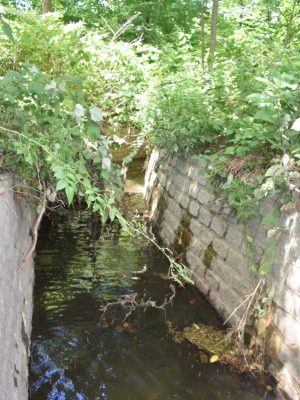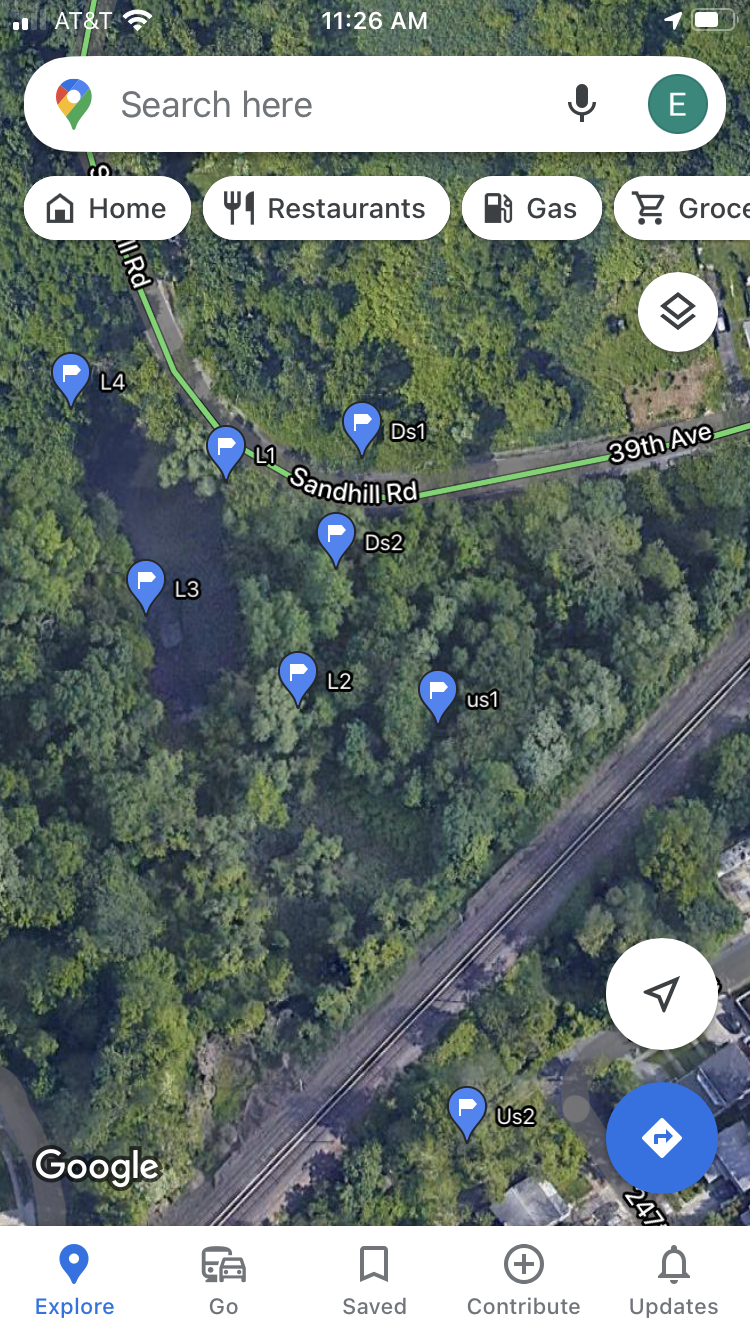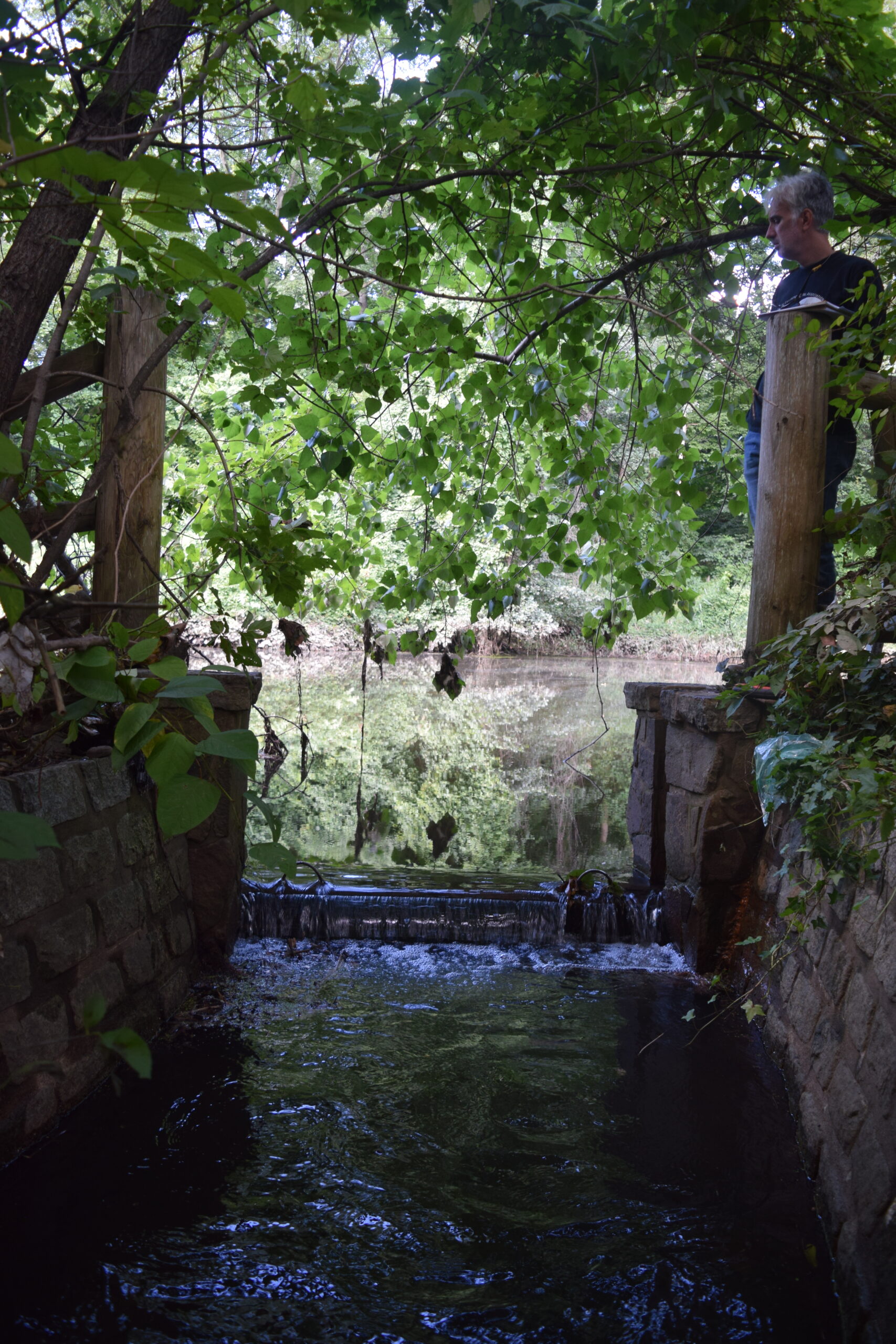Gablers Creek

About the Gablers Creek Project
Gabler’s Creek is a small coastal stream that originates on the northern slopes of Long Island’s glacial moraine in northwest Queens. Draining a narrow watershed in the community of Douglaston, it flows north through a steep wooded ravine for several thousand feet before terminating in Long Island Sound’s Little Neck Bay. Much of the creek runs through a protected corridor, including the New York Department of Conservation’s Udalls Cove & Ravine Natural Resource Area. Before it reaches the Sound, Gabler’s Creek flows through Aurora Pond (a one-acre freshwater pond) and passes under a two-lane roadway (Sandhill Road). The dam that controls the pond’s water level is not passable to most aquatic organisms and the culvert is undersized and not designed for wildlife passage; the structures combine to restrict the ability of fish and other species to move up or down the creek.
Seatuck Environmental Association received a grant from the Long Island Sound Stewardship Fund in 2021 to work with NYC Parks, The Nature Conservancy, and the USFWS (Fish and Aquatic Conservation Program) to assess and improve the stream connectivity and wildlife habitat at Gablers Creek. The project 1) determined the extent to which, if any, river herring and/or river otters are already using parts of Gabler’s Creek, 2) conducted detailed assessments of the barriers to wildlife movement, and 3) monitored water quality in the creek and pond to determine if there were any factors that would inhibit wildlife restoration.
Assessing Wildlife Habitat
River Herring and American Eel Monitoring: Seatuck surveyed Gablers Creek from March-May 2021 during the migratory season. We followed the Long Island River Herring & Eel survey protocol. We found evidence of juvenile American Eels but not River Herring.
Otter Monitoring: Seatuck surveyed for evidence of otter latrine sites, small areas where otters leave their scent, physical signs like scat, and sometimes food scraps. While there wasn’t evidence of a maintained latrine site, some otter scat was found meaning that a transient otter was in the area.
Water Quality Monitoring: Seatuck contracted with New York City Parks to conduct water quality monitoring in Aurora Pond. Parameters included temperature, dissolved oxygen, pH, conductivity, oxidation-reduction potential (ORP), salinity, turbidity, phosphorus and nitrate/nitrite. The results indicated that the water quality in the pond does not support river herring and that water levels might also present a barrier.
Spillway/Barrier Assessment: Seatuck collected detailed measurements and photographs of the Aurora Pond dam and downstream chase. The United States Fish & Wildlife Service (USFWS) Fish and Aquatic Conservation Program then created a conceptual plan for fish passage with the measurements taken at Aurora Pond. The resulting conceptual plan was for a pool & weir-style fish pass with a notch.
Culvert Assessment: Seatuck conducted an assessment of the culvert on Sand Hill Road, pursuant to the culvert assessment protocol developed by the North Atlantic Aquatic Connectivity Collaborative. The culvert was identified as having moderate Aquatic Organism Passability.


